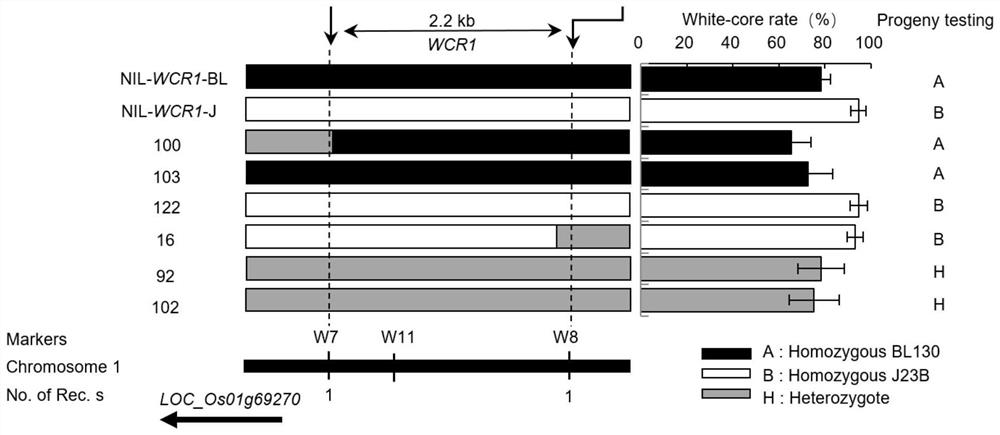Application of WCR1 gene in regulating core-white rate or taste quality of rice
A food quality and gene technology, applied in the field of rice breeding, can solve the problems of ineffective application, no transgene, and lack of functional molecular markers.
- Summary
- Abstract
- Description
- Claims
- Application Information
AI Technical Summary
Problems solved by technology
Method used
Image
Examples
Embodiment Construction
[0034] The principles and features of the present invention are described below in conjunction with the accompanying drawings, and the examples given are only used to explain the present invention, and are not intended to limit the scope of the present invention.
[0035] 1. Material selection and establishment of recombinant inbred line (RIL) population
[0036] The high chalkiness japonica rice variety Hokuri 130 (BL130) and the low chalkiness indica rice variety Jin 23B (J23B) were selected for crossing to obtain F1, and the progeny were continuously selfed, and 184 F6 plants were obtained according to the method of "single seed transmission" as RIL group.
[0037] 2. Phenotype identification and genetic map construction
[0038] Using the SSR method to identify the genotype, screen the polymorphic SSR primers, and obtain 190 pairs of polymorphic SSR markers and 2 pairs of InDel markers. A genetic linkage map was constructed with RM series primers, and gaps were filled with...
PUM
 Login to View More
Login to View More Abstract
Description
Claims
Application Information
 Login to View More
Login to View More - R&D
- Intellectual Property
- Life Sciences
- Materials
- Tech Scout
- Unparalleled Data Quality
- Higher Quality Content
- 60% Fewer Hallucinations
Browse by: Latest US Patents, China's latest patents, Technical Efficacy Thesaurus, Application Domain, Technology Topic, Popular Technical Reports.
© 2025 PatSnap. All rights reserved.Legal|Privacy policy|Modern Slavery Act Transparency Statement|Sitemap|About US| Contact US: help@patsnap.com



